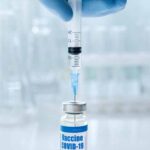With respect to treatment of acute SARS-CoV-2 infection, Paxlovid (nirmatrelvir/ritonavir) is frequently used: Patients should present for treatment within the first five days of symptom onset, and clinicians should be aware of the many drug interactions that this medication may have with other pharmacologic therapies. The University of Liverpool, United Kingdom, has created a website where doctors can check for such interactions.2
Dr. Perritt explained that molnupiravir is another treatment for acute SARS-CoV-2 infection, although variable effectiveness has been reported. A different treatment, bebtelovimab (a monoclonal antibody), is for patients who are not candidates for antiviral therapy, but many resistant strains of SARS-CoV-2 now exist, thereby reducing the overall effectiveness of this medication.
Dr. Perritt concluded her talk by predicting remdesivir will see increasing use in the outpatient setting in the years to come.
Therapies
The second lecturer in the session was Stephen Saw, PharmD, BCIDP, clinical pharmacy specialist (infectious diseases) at the Hospital of the University of Pennsylvania, Philadelphia. Dr. Saw provided an overview of the timeline related to use of interleukin-6 (IL-6) inhibition, glucocorticoids and Janus kinase inhibition in the treatment of patients with COVID-19.
On these topics, he first discussed the REMAP-CAP study, an international, multifactorial, adaptive platform trial that involved randomization of adult patients with COVID-19 (within 24 hours after starting organ support in the intensive care unit) to treatment with tocilizumab, sarilumab or standard care (i.e., the typical care being provided to patients with COVID-19 at each clinical site). The primary outcome evaluated was respiratory and cardiovascular organ support-free days.
In this study, both tocilizumab and sarilumab met the predefined criteria for efficacy, and an analysis of 90-day survival showed improved survival in the pooled IL-6 receptor antagonist groups, with a hazard ratio compared with the control group of 1.61 (95% confidence interval, 1.25 to 2.08).3
Dr. Saw went on to discuss the RECOVERY study, a controlled, open-label trial in which patients hospitalized with COVID-19 who were receiving a range of possible treatments were randomized to receive oral or intravenous dexamethasone at a dose of 6 mg once daily for up to 10 days or to receive usual care alone (i.e., the typical care that was being provided to patients with COVID-19 at that time). The primary outcome was 28-day mortality. In this study of more than 6,000 patients, the age-adjusted rate ratio of 28-day mortality was 0.83 when comparing the dexamethasone group to the standard of care group (95% confidence interval, 0.75 to 0.93; P<0.001).4 This reduced rate of 28-day mortality in the dexamethasone group was impressive, but Dr. Saw noted that some possible limitations of the study included subjective inclusion and exclusion criteria, and a heterogeneous patient population.



